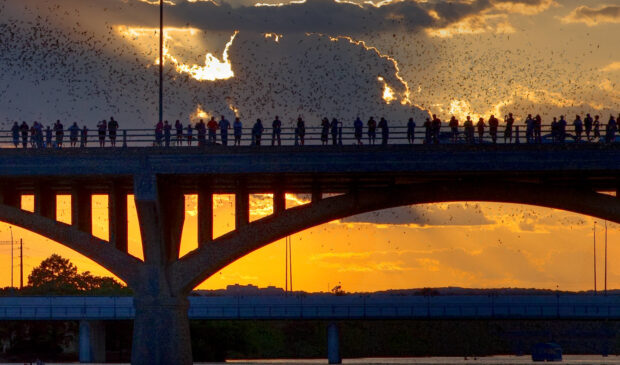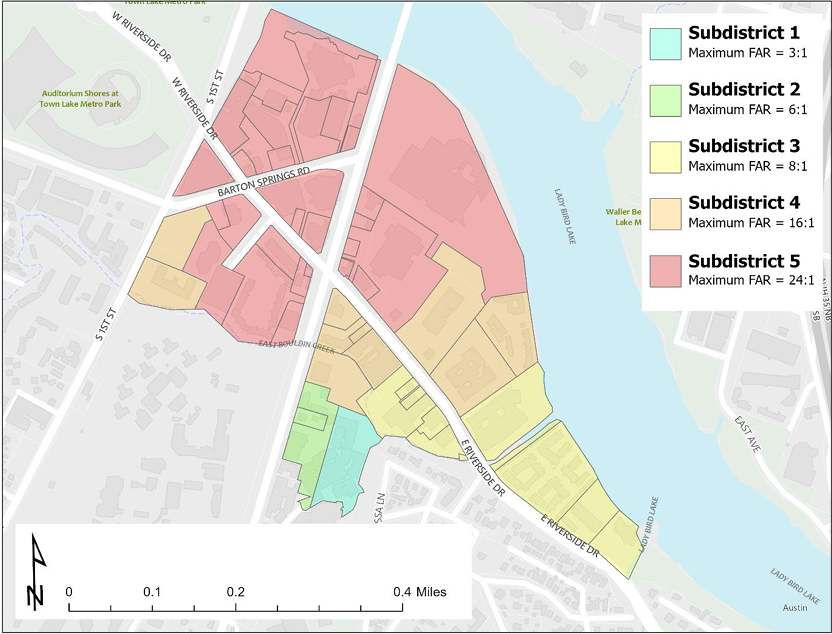About the Author
Chad Swiatecki is a 20-year journalist who relocated to Austin from his home state of Michigan in 2008. He most enjoys covering the intersection of arts, business and local/state politics. He has written for Rolling Stone, Spin, New York Daily News, Texas Monthly, Austin American-Statesman and many other regional and national outlets.
Newsletter Signup
The Austin Monitor thanks its sponsors. Become one.
Most Popular Stories
- Latest State of Downtown report shows the city core’s businesses and housing are in transition
- Cap Metro to shelve 46 new electric buses for a year after manufacturer bankruptcy
- Jesús Garza disputes allegation that he violated city ethics rule
- Mobility Committee hears public concern regarding expansion of MoPac
- Council gives first reading OK to major development on tiny slice of land
-
Discover News By District

City seeks feedback on density, planning framework for South Central district
Thursday, February 22, 2024 by Chad Swiatecki
The city has released the plan intended to shape the development of the southern shoreline of Lady Bird Lake and beyond, with public input sought until March 20. City Council is expected to consider the South Central Waterfront Combining District & Density Bonus Program this spring, likely at its joint meeting with the Planning Commission on May 16.
The new framework is a step away from a formal regulating plan that many planning stakeholders had sought in the years since the vision for the district was adopted in 2016. At the January meeting of the South Central Waterfront Advisory Board, staff from the Planning Department said the city’s legal staff advised moving toward a plan that emphasized incentives for developers to opt in to the community benefits sought for the area through increased density, rather than making them part of any zoning classifications for properties slated for major redevelopments.
 Much of the mix of parcels immediately east and west of South Congress Avenue south of the Ann W. Richards Congress Avenue Bridge – which includes the site of the former Austin American-Statesman building – could qualify for a floor area ratio of 24:1 under the revised guidelines. That change was made in large part because land prices have increased as much as eightfold since the adoption of the vision plan that had estimated far fewer towers throughout the area.
Much of the mix of parcels immediately east and west of South Congress Avenue south of the Ann W. Richards Congress Avenue Bridge – which includes the site of the former Austin American-Statesman building – could qualify for a floor area ratio of 24:1 under the revised guidelines. That change was made in large part because land prices have increased as much as eightfold since the adoption of the vision plan that had estimated far fewer towers throughout the area.
Sections of land farther east along the lake have lower potential floor area ratio of 16:1 and 8:1, with a mix of heights possible for the properties south of Riverside Drive.
For several years, members of the South Central Waterfront Advisory Board had lamented the lack of progress on a regulating or other plan for the district, but the matter has become a priority over the past year in part because of the possible federal funds for Project Connect that favor higher densities.
Board Chair Jim Stephenson said while some developers have pursued a planned unit development (PUD) approval process in recent years – which can take three or more years to complete – the city hopes a faster approval of roughly one year would be possible under the new framework.
“By virtue of the City Council and mayor directive to get this thing moving and to get it in sync with the development community, we can actually have some action,” he said. “What’s been going on behind the scenes is in the absence of any true regulating plan or movement towards a zoning solution here, developers have been going around the South Central Waterfront board and really going through the PUD process. It’s always going to be somewhat of a compromise between the aspirational goals in the 2016 and 2017 draft to what is actionable in the real world economics of 2024, and where we are at with lending rates and with the land prices.”
Stephenson, who works as an architect, said he believes many developers will opt for the certainties of the proposed density bonus programs and other guidelines instead of the largely ad hoc nature of the PUD approval process that in many ways is still informed by the now mostly irrelevant vision plan, noting “they’re looking at way-old documents that don’t correlate at all with the current market realities.”
SCWAB Member Dave Sullivan said without the more strict guidelines of a regulating plan, the city has to pursue creating “something that’s tantalizing enough that developers would simply accept it and not try to do something going to PUD route, which requires a whole new zoning.”
“I would love to see mixed use with lots of housing and … some music venues and coffee shops and walkable stuff there. Something that would complement our music identity for the city,” he said. “I don’t know if that’s the money maker that people are looking for. They can make more money with a high-end restaurant and high-end housing, but even though some affordable housing will be included as a requirement, the same way it is in PUDs, you’re going to have a lot of couple-million-dollar condos in some of those high-rises down there.”
Photo made available through a Creative Commons license.
The Austin Monitor’s work is made possible by donations from the community. Though our reporting covers donors from time to time, we are careful to keep business and editorial efforts separate while maintaining transparency. A complete list of donors is available here, and our code of ethics is explained here.
Posted In: Planning, District 5
You're a community leader
And we’re honored you look to us for serious, in-depth news. You know a strong community needs local and dedicated watchdog reporting. We’re here for you and that won’t change. Now will you take the powerful next step and support our nonprofit news organization?








